Best Haskell Programming Books to Buy in November 2025
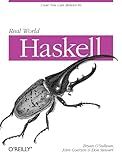
Real World Haskell
- QUALITY ASSURANCE: ENJOY 'USED BOOK' BENEFITS AT A FRACTION OF THE PRICE.
- ECO-FRIENDLY CHOICE: CONTRIBUTE TO SUSTAINABILITY BY BUYING USED BOOKS.
- UNIQUE FINDS: DISCOVER RARE TITLES AND EDITIONS HARD TO FIND ELSEWHERE.


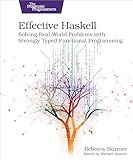
Effective Haskell: Solving Real-World Problems with Strongly Typed Functional Programming



Miriam Haskell Jewelry
- AFFORDABLE PRICES ON QUALITY USED BOOKS FOR BUDGET-SAVVY READERS.
- ECO-FRIENDLY CHOICE; GIVE A SECOND LIFE TO PRE-LOVED LITERATURE.
- THOROUGHLY INSPECTED FOR GOOD CONDITION; TRUST IN EVERY PURCHASE!


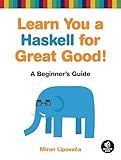
Learn You a Haskell for Great Good!: A Beginner's Guide
- QUALITY ASSURANCE: RELIABLE USED BOOKS, INSPECTED FOR GREAT CONDITION.
- ECO-FRIENDLY CHOICE: SUSTAINABLY SAVE MONEY WHILE READING MORE.
- UNIQUE FINDS: DISCOVER RARE TITLES AT A FRACTION OF THE PRICE!


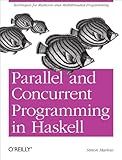
Parallel and Concurrent Programming in Haskell: Techniques for Multicore and Multithreaded Programming


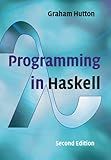
Programming in Haskell


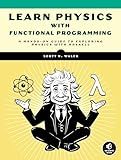
Learn Physics with Functional Programming: A Hands-on Guide to Exploring Physics with Haskell


In Haskell, you can declare and use data types to define your own custom types. These types can have different constructors, allowing you to create values of those types. Here is an overview of the process:
- Writing a data declaration: To declare a data type, you use the data keyword followed by the type name and any parameters it may have. For example: data MyType a b = Constructor1 a | Constructor2 b This declares a type called MyType that takes two type parameters a and b. It has two constructors: Constructor1 takes a value of type a and Constructor2 takes a value of type b.
- Using data types: Once you've declared a data type, you can use it to create values. To use a constructor, you specify the constructor name followed by any required values. For example: value1 = Constructor1 "hello" -- Creating a value of type MyType String b value2 = Constructor2 42 -- Creating a value of type MyType a Int
- Pattern matching: Pattern matching is a powerful feature that allows you to destructure values of a data type and perform different actions based on their constructors. For example: processValue :: MyType String Int -> String processValue (Constructor1 str) = "Received a string: " ++ str processValue (Constructor2 num) = "Received a number: " ++ show num In the above code, we define a function processValue that takes a value of type MyType String Int and pattern matches on its constructors. If it matches Constructor1, it concatenates the string with a prefix. If it matches Constructor2, it converts the number to a string.
- Type parameters and polymorphism: Data types can also take type parameters, allowing them to be more flexible and reusable. For example, we defined MyType with type parameters a and b. This means you can create values of MyType with different types for a and b. For instance: value3 :: MyType Char Bool value3 = Constructor1 'a' value4 :: MyType Int Double value4 = Constructor2 3.14
Overall, declaring and using data types in Haskell gives you the ability to create custom types and manipulate values of those types using pattern matching. This is a fundamental technique in Haskell programming and enables a high degree of abstraction and type safety.
What is the significance of the 'Void' data type in Haskell?
In Haskell, the Void data type represents an empty type with no possible values. It is used to indicate that a computation or function will never successfully produce a value. The significance of the Void type lies in its usefulness in various situations, such as:
- Type inference: When a function has a return type of Void, it allows the compiler to infer that the function does not terminate normally or does not produce any result.
- Error handling: The Void type can be used as the result type of functions that are expected to never be called, such as error handlers or unreachable code. This helps in explicitly expressing the intent that a certain branch of code is not reachable.
- Phantom types: The Void type is often used as a placeholder type in the definition of phantom types, which are types that do not carry any value but instead provide additional static type safety guarantees at compile-time.
- Proof of impossibility: The Void type can be used in situations where a particular state or condition is expected to be impossible, and by using Void as a result type, it provides a proof that the corresponding computation cannot produce any value.
Overall, the Void type plays a role in type safety, program correctness, and expressing design intent in Haskell.
How to declare and use a custom data type in Haskell?
To declare and use a custom data type in Haskell, you can follow these steps:
- Start by defining the data type using the data keyword, followed by the type name and any field names and types enclosed in curly braces and separated by commas. For example, let's create a simple data type called Person with fields for name and age:
data Person = Person { name :: String, age :: Int }
- Once you have defined your data type, you can create instances of it by providing values for the fields. For example:
person1 :: Person person1 = Person { name = "Alice", age = 25 }
- You can access the fields of a data type using the field accessors. In the example above, name and age are field accessors for the Person data type. To access a field, simply call the accessor function with a data instance as its argument. For example:
main :: IO () main = do putStrLn $ "Name: " ++ name person1 putStrLn $ "Age: " ++ show (age person1)
This will output:
Name: Alice Age: 25
- You can also pattern match on data type instances to extract the fields. For example:
greet :: Person -> String greet (Person { name = n }) = "Hello, " ++ n ++ "!"
In this example, the greet function pattern matches on a Person instance to extract the name field and constructs a greeting string using it.
You can now use the greet function with a Person instance:
main :: IO () main = putStrLn $ greet person1
This will output:
Hello, Alice!
That's it! You have now declared and used a custom data type in Haskell.
How to declare and use a polymorphic data type in Haskell?
In Haskell, you can declare and use polymorphic data types using the data keyword. Here's an example of how to do it:
data MyType a = MyValue a
-- Here, `MyType` is a polymorphic data type that takes a type parameter `a` -- The `MyValue` constructor takes a value of type `a` and constructs a value of type `MyType a`
-- Example usage: value1 :: MyType Int value1 = MyValue 42
value2 :: MyType String value2 = MyValue "Hello, World!"
-- You can use pattern matching to extract the value from a `MyType` value extractValue :: MyType a -> a extractValue (MyValue x) = x
main :: IO () main = do putStrLn $ show $ extractValue value1 -- Output: 42 putStrLn $ extractValue value2 -- Output: Hello, World!
In the above example, MyType is a polymorphic data type that can hold values of different types. MyValue is the constructor that takes a value of type a and constructs a value of type MyType a.
What is the purpose of declaring a Maybe data type in Haskell?
The purpose of declaring a Maybe data type in Haskell is to handle situations when a value may be missing or nonexistent. It represents a value that can be either Just a value or Nothing.
By using the Maybe type, it allows for safer and more explicit handling of situations where a function or operation could potentially result in a missing value. It forces the programmer to explicitly handle both the cases where a value is present (Just value) and where a value is missing (Nothing).
This is particularly useful in functional programming, where null or undefined values are not allowed and can cause runtime errors or unexpected behavior. The Maybe type helps to ensure that the code is more robust and avoids such issues, as it forces the programmer to handle the absence of a value explicitly.
